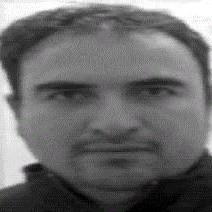
Jose Mejia
Work place: UACJ/Department of electrical and computation, Juarez, Mexico
E-mail: jose.mejia@uacj.mx.org
Website:
Research Interests: Medical Image Computing, Image Processing, Image Manipulation, Image Compression
Biography
Jose Mejia, received the M.Sc. degree in electrical engineering and a Ph. D of Science in Engineering from the Autonomous University of Ciudad Juarez (Mexico). He has also worked for the consumer electronics and automotive industry as an electronic test equipment designer. His research interests include medical image processing with special attention to denoising, super resolution, and contrast enhancement. He is currently Research Professor in the Department of Electrical and Computation Engineering at the Autonomous University of Ciudad Juarez.
Author Articles
Super Resolution of PET Images using Hybrid Regularization
By Jose Mejia Boris Mederos Liliana Avelar-Sosa Leticia Ortega Maynez
DOI: https://doi.org/10.5815/ijigsp.2017.01.01, Pub. Date: 8 Jan. 2017
Positron emission tomography images are used to diagnose, staggering, and monitoring several diseases like cancer and Alzheimer, also, this technique is used in clinical research to help to assess the therapeutic and toxic effects of drugs. However, a main drawback of this modality is the poor spatial resolution due to limiting factors such as positron range, instrumentation limits and the allowable doses of radiotracer for administration to patients. These factors also lead to low signal to noise ratios in the images. In this paper, we proposed to increment the resolution of the image and reduce noise by implementing a super resolution scheme, we proposed to use a hybrid regularization consisting of a TV term plus a Tikhonov term to solve the problem of low resolution and heavy noise. By using an anatomical driven scheme to balance between regularization terms we attain a better resolution image with preservation of small structures like lesions and reduced noise without blurring the edges of images. Experimental results and comparisons with other methods of the state-of-the-art show that our proposed scheme produces better preservation of details without adding artifacts when the resolution factor is increased.
[...] Read more.Other Articles
Subscribe to receive issue release notifications and newsletters from MECS Press journals